Table Of Contents [hide]
Are you tired of your boring and cluttered bedside table? Are you looking for creative and practical ideas to revamp your bedroom space? Look no further, as we bring you a curated list of innovative bedside table ideas that will elevate the aesthetic and functionality of your room. Get ready to transform your bedside with these inspiring ideas.
Uncover more: Best Bedroom Wallpaper

A bedside table is a small piece of furniture that is typically placed next to a bed. It serves as a convenient spot to store essentials and provides easy access to items such as books, lamps, alarm clocks, and personal belongings. Bedside tables come in a variety of styles, sizes, and materials to match different bedroom aesthetics. Some popular options include:


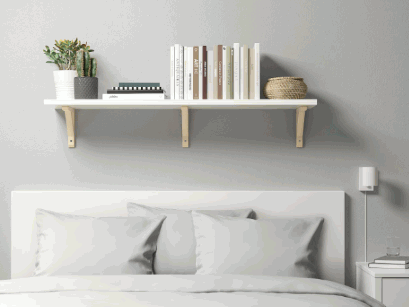
When selecting a bedside table, it is important to consider the available space, storage needs, and overall design of your bedroom. Whether you prefer a minimalist look or a statement piece, there are plenty of options available to suit your taste and requirements.
A bedside table is a crucial piece of furniture in a bedroom. It not only offers convenience and functionality but also serves several important purposes:
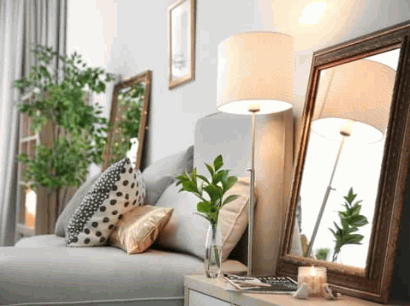
When it comes to bedroom design, every detail counts. One often overlooked but essential piece of furniture is the bedside table. However, not all bedside tables are created equal. In this section, we will discuss the various types of bedside tables available and their unique features. From traditional bedside tables to modern floating options, we will explore the different designs that can elevate your bedroom to the next level. So, let's dive in and discover the perfect bedside table for your bedroom.
Traditional bedside tables are timeless and classic additions to any bedroom. If you are considering incorporating traditional bedside tables, here are some steps to keep in mind:
Pro-tip: To achieve a cohesive look, try pairing traditional bedside tables with classic table lamps and coordinating hardware finishes.
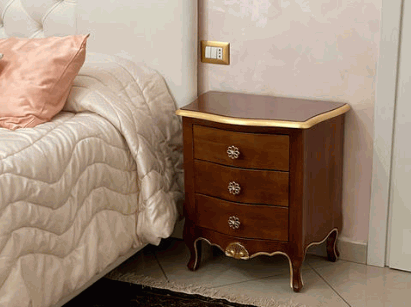
Modern bedside tables are a popular choice for contemporary bedrooms. If you're in the market for a modern bedside table, here are some steps to consider:
For a wide range of modern bedside table options, consider brands such as IKEA, West Elm, or CB2.
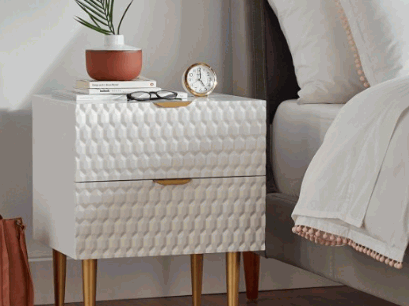
Floating bedside tables provide a stylish and space-saving option for bedroom storage. They can add a modern and sleek touch to your bedroom while providing a convenient surface for essentials like a lamp or alarm clock.

Bedside cabinets, also known as bedside tables, are a popular choice for keeping essential items close by while providing ample storage space. These cabinets typically feature drawers or shelves, making it easy to organize your belongings in a neat and tidy manner. They come in a variety of styles and materials, ranging from traditional wooden designs to modern and sleek options.
When selecting a bedside cabinet, it is important to consider the size and proportion of your bedroom, as well as your storage needs. To create a cohesive look, coordinate the style of the cabinet with your bedroom decor. You can also add a personal touch to your bedside cabinet by incorporating decorative items, functional accessories, and pops of color and pattern.

Bedside shelves are a practical and space-saving option for bedside storage. Here are some steps to consider when using bedside shelves:
These steps can help you create a functional and aesthetically pleasing bedside area with the use of bedside shelves.

When it comes to bedroom decor, the bedside table is often an overlooked element. However, with a little creativity, it can be a functional and stylish addition to your space. In this section, we will share five unique and creative bedside table ideas that can elevate the design of your bedroom. From utilizing wall space to repurposing everyday items, these ideas will inspire you to think outside the box and add a personal touch to your bedside.
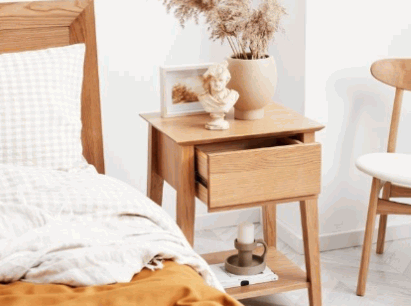
Utilizing wall space is a smart way to maximize the functionality and aesthetic appeal of your bedside table area. Here are some steps to help you make the most of your wall space:
Using a stool or ottoman as a bedside table can add a unique and stylish touch to your bedroom decor. Here are some steps to effectively use a stool or ottoman as a bedside table:
Repurposing items as bedside tables is a creative way to add a unique touch to your bedroom decor. Here are some steps to repurpose items as bedside tables:
Incorporating multi-functional furniture into your bedside table can maximize space and functionality in your bedroom. Here are some steps to achieve this:
By incorporating multi-functional furniture into your bedside table, you can optimize your bedroom space and enhance its usability for various purposes.
To achieve a minimalist look with your bedside table, follow these steps:
The bedside table is an essential piece of furniture in any bedroom, providing a convenient spot to place your alarm clock, phone, and other items. But with so many options available, how do you choose the right one for your space? In this section, we'll discuss some key tips to keep in mind when selecting a bedside table. From size and storage to style and coordination, we'll cover everything you need to know to find the perfect bedside table for your bedroom.
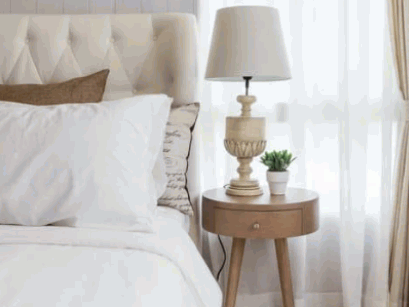
When selecting a bedside table, it is important to consider the size and proportion to ensure it fits well in your bedroom. Here are some steps to guide you in this process:
Remember, the bedside table should complement the overall aesthetic of your bedroom while also providing adequate functionality and convenience. By considering the size and proportion, you can find the perfect bedside table that will enhance the decor of your bedroom.
When selecting a bedside table, it's important to consider your storage requirements. Here are some steps to take into account:
Pro-tip: To maximize storage, opt for a bedside table with multiple storage options, such as a combination of drawers, shelves, and compartments.
When selecting a bedside table, it's crucial to ensure it matches or coordinates with your bedroom decor. Follow these steps to achieve a cohesive and stylish look:
When selecting a bedside table, it is crucial to find a style that aligns with your needs and aesthetic preferences.
Fact: The choice of a bedside table style can significantly contribute to the overall ambiance and functionality of your bedroom.
Your bedside table is not just a place to rest your phone and a glass of water. It is also an opportunity to showcase your personal style and add a touch of personality to your bedroom. In this section, we will discuss various ways to personalize your bedside table and make it a reflection of your unique taste. From adding decorative items to incorporating functional accessories, using color and pattern, and mixing and matching styles, there are endless possibilities to make your bedside table truly your own.

When personalizing your bedside table, incorporating decorative items can greatly enhance the overall look and feel. Here are some steps to consider:
By following these steps and adding decorative items that reflect your personal style, you can transform your bedside table into a visually appealing and personalized space.
Incorporating functional accessories into your bedside table can greatly enhance its usefulness and make your nighttime routine more convenient. Follow these steps to achieve this:
These functional accessories not only increase the practicality of your bedside table but also add a personal touch and style to your bedroom.
When personalizing your bedside table, incorporating color and pattern can add a touch of style and creativity to your bedroom. Here are some steps to follow:
Consider these suggestions to enhance the visual appeal of your bedside table and create a cohesive and stylish look in your bedroom.
Mixing and matching styles for your bedside table can add visual interest and personality to your bedroom decor. Here are some steps to achieve this look:
Mixing and matching styles in interior design has been a popular practice for centuries. It originated from the eclectic style of the Victorian era, where different design elements were combined to create a unique and personalized space. This approach allows individuals to showcase their personality and creativity in their home decor, making it a timeless and versatile technique in interior design.
Table Of Contents [hide]
Are you tired of your dull and boring bedroom? Do you want to transform it into a cozy and stylish retreat? Then look no further, because this article on "Best Bedroom Wallpaper" is here to guide you. Discover the importance of wallpaper in revamping your bedroom and get ready to be inspired with our top picks. Get ready to take your bedroom to the next level.

Bedroom wallpaper is a decorative wall covering that is used to enhance the aesthetic appeal of a bedroom. It is available in a variety of designs, patterns, and colors, allowing individuals to personalize their sleeping space. This type of wallpaper can serve as a focal point in the room or create a soothing backdrop. It is typically made from durable and easy-to-clean materials such as vinyl or fabric. When selecting bedroom wallpaper, it is important to consider the overall theme and style of the room, as well as personal preferences.
Wallpaper has been utilized for centuries to adorn walls. Its popularity grew in Europe during the 16th century and was originally crafted from hand-painted or block-printed paper. In the 19th century, machine-made wallpaper became more affordable and accessible. Today, there is a wide range of bedroom wallpaper options available, thanks to advancements in printing technology that allow for intricate designs and realistic patterns.
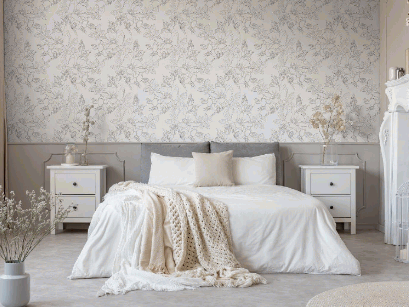
When it comes to decorating your bedroom, choosing the right wallpaper can make all the difference. But with so many options available, it can be overwhelming to decide which type of wallpaper is best suited for your space. In this section, we will explore the various types of bedroom wallpaper, including traditional, vinyl, non-woven, grasscloth, textured, and peel-and-stick. Each type offers unique characteristics and benefits, and by the end, you'll have a better understanding of which type will work best for your bedroom.
Traditional wallpaper has been a popular choice for bedroom decor for centuries. Here are the steps involved in installing traditional wallpaper:
Remember to follow the manufacturer's instructions for specific types of traditional wallpaper, and seek professional help if needed.
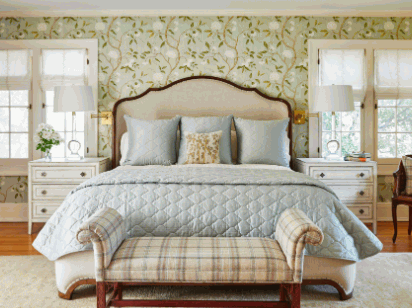
Vinyl wallpaper is a top choice for bedrooms due to its durability and versatility. Made from a synthetic material called polyvinyl chloride (PVC), it is resistant to moisture and easy to clean. Homeowners can choose from a wide range of colors, patterns, and textures, making it a popular option. It is also simple to install and remove, making it convenient for those who like to change their decor often.
Popular vinyl wallpaper designs include:
Consider using vinyl wallpaper for a stylish and low-maintenance bedroom makeover.
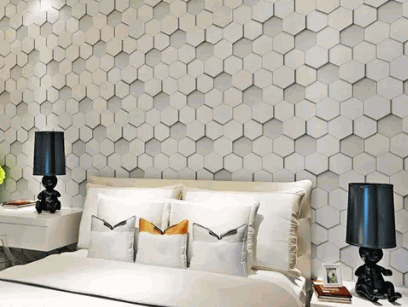
Non-woven wallpaper is a popular type of wallpaper for bedrooms, known for its durability and ease of installation. It is created using a combination of synthetic and natural fibers, resulting in a strong and tear-resistant material. This type of wallpaper is also breathable and resistant to mold and mildew, making it ideal for use in high-humidity areas. Additionally, it is easy to clean and can be removed without leaving any residue behind.
With a wide variety of colors, patterns, and textures to choose from, non-woven wallpaper offers versatility in design options. Consider using non-woven wallpaper for a hassle-free and long-lasting option for your bedroom walls.
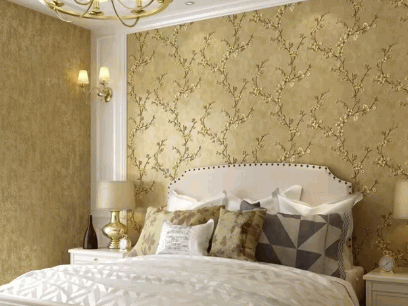
Grasscloth wallpaper is a type of bedroom wallpaper made from natural fibers, such as jute, hemp, or seagrass. It adds texture and a touch of nature to any room. This unique wallpaper is known for its irregular patterns, offering a rustic and organic look. Not only is it durable and able to withstand wear and tear, but it also has a long history. Originating in Asia, grasscloth wallpaper has been used for centuries and was traditionally handwoven using natural plant fibers. However, due to its sensitivity to moisture, it is not recommended for use in high-humidity areas like bathrooms. This type of wallpaper is commonly found in bedrooms, living rooms, and dining areas, creating a cozy and natural ambiance.
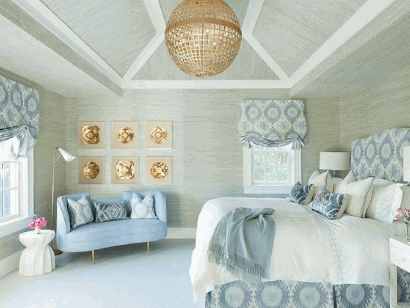
Textured wallpaper adds dimension and visual interest to a bedroom. Follow these steps to successfully install textured wallpaper:

Peel-and-stick wallpaper is a convenient and easy-to-use option for decorating your bedroom walls. Here are the steps for installing this type of wallpaper:
Peel-and-stick wallpaper offers a hassle-free way to update your bedroom decor without the need for glue or professional installation.
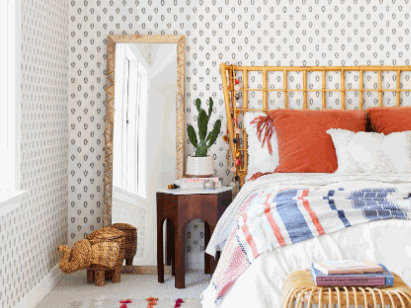
When it comes to choosing the perfect wallpaper for your bedroom, there are several factors to consider. The color and pattern of the wallpaper can greatly impact the overall feel of the room, while the material and durability will determine its longevity. It's also important to think about the ease of installation and removal, as well as the cost. Additionally, the size of your room and the amount of natural lighting should be taken into account. Let's delve into each of these factors further to help you make the best decision for your bedroom wallpaper.
When selecting bedroom wallpaper, it is important to consider both color and pattern to achieve the desired atmosphere and aesthetic.
Pro-tip: If you are uncertain about committing to a bold color or pattern, try starting with an accent wall before covering the entire room.
Learn more: Blue And Grey Bedroom
When selecting bedroom wallpaper, it is crucial to take into account the material and durability of the wallpaper. Here are some important factors to keep in mind:
To ensure long-lasting results, choose a material that meets your specific needs and take into consideration factors such as humidity and exposure to sunlight.
When selecting bedroom wallpaper, it's crucial to consider the ease of installation and removal. Follow these steps for a smooth process:
Fun Fact: Many modern wallpapers are designed to be easily removable without causing damage to the walls, making it simple to update your bedroom decor whenever you please.
When considering bedroom wallpaper, it is important to factor in the cost. Here are some key elements to keep in mind:
It is important to establish a budget before beginning your search for bedroom wallpaper and prioritize your preferences accordingly. It can also be beneficial to compare prices and explore different options to find the perfect balance of cost and quality.
When selecting bedroom wallpaper, it is important to take into account the size of the room and the lighting in order to achieve the desired aesthetic and ambiance. Here are some key factors to consider:
Choosing the perfect wallpaper for your bedroom can be a daunting task, with countless designs and patterns to choose from. To help narrow down your options, let’s take a closer look at the top five best bedroom wallpaper designs. From the classic elegance of floral wallpaper to the modern boldness of geometric patterns, we’ll discuss the unique features and benefits of each design. Whether you’re looking for a calming oasis or a statement piece for your bedroom, there’s a wallpaper design that will suit your style and enhance your space.
Floral wallpaper can add a touch of elegance and beauty to any bedroom. Follow these steps to easily install floral wallpaper in your bedroom:
To maintain your floral wallpaper, it is important to avoid excessive moisture, gently clean it with non-abrasive methods, and promptly repair any tears or damages. It is also recommended to keep it away from direct sunlight to prevent color fading over time. With proper care, your floral wallpaper will continue to enhance your bedroom for many years to come.
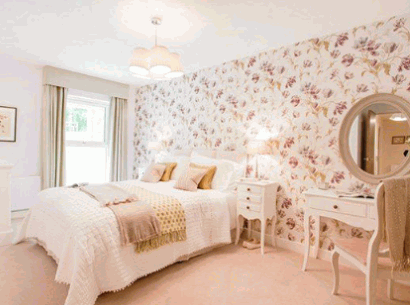
Geometric wallpaper is a popular choice for adding a modern and stylish touch to a bedroom. It comes in a variety of patterns, including stripes, chevrons, and geometric shapes. When selecting geometric wallpaper, it is important to consider the following factors:
For the most impressive bedroom wallpaper designs, consider geometric wallpapers with bold patterns and contrasting colors. These designs can create a visually striking focal point in the room.
To install geometric wallpaper, gather all necessary materials, measure and cut the wallpaper, apply adhesive, hang the wallpaper, smooth out any air bubbles, and trim excess wallpaper.
To maintain bedroom wallpaper, avoid excessive moisture, clean with gentle methods, and promptly repair any tears or damages. Additionally, avoid direct sunlight to prevent fading.
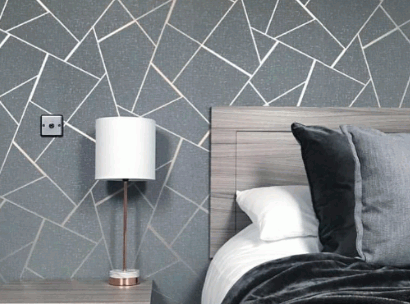
Damask wallpaper is a popular choice for bedroom decor due to its elegant and timeless design. Here is a list of steps to consider when using damask wallpaper for your bedroom:
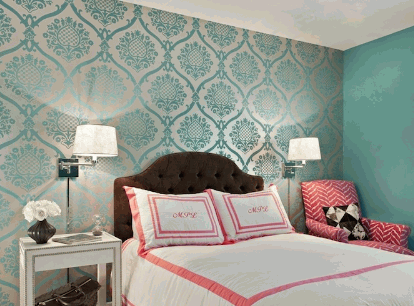
Striped wallpaper is a favored option for bedrooms as it brings visual appeal and can give the impression of height or width in a room. It comes in a variety of colors, widths, and orientations, making it customizable to fit different design styles. Striped wallpaper can make a bold statement or add subtle texture to a space. It complements both modern and traditional decor.
Fun fact: Did you know that striped wallpaper was initially popularized in the 18th century and has remained a timeless design choice ever since?

Tropical wallpaper can add a vibrant and exotic touch to your bedroom. To incorporate this design into your space, follow these steps:
To maintain your tropical wallpaper, avoid excessive moisture, clean with gentle methods, and repair any tears or damages immediately. Enjoy the tropical paradise in your bedroom!

Are you looking to give your bedroom a fresh new look? Wallpaper can be a great way to add color and texture to your walls. But how do you install it properly? In this section, we will discuss the step-by-step process of installing bedroom wallpaper. From gathering materials and preparing the wall to smoothing out air bubbles and trimming excess wallpaper, we’ll cover all the necessary steps to achieve a flawless wallpaper installation. So let’s get started!
Before installing bedroom wallpaper, it's important to gather materials and prepare the wall properly. Here are the steps to follow:
Remember to take your time and follow the manufacturer's instructions for the specific wallpaper you're using. Good luck with your wallpaper installation!
Fun Fact: Taking accurate measurements and cutting the wallpaper properly is crucial for a seamless and professional-looking installation.

To properly apply adhesive and hang wallpaper in your bedroom, carefully follow these steps:
Remember these helpful tips for a successful wallpaper installation:

When installing bedroom wallpaper, follow these steps to repeat the process for additional strips:
Wallpaper has been used to decorate interiors for centuries, with evidence of its existence dating back to ancient Egypt. Initially, it was hand-painted and reserved for the wealthy. In the 18th century, advancements in printing technology made wallpaper more accessible. Today, there is a wide range of designs, materials, and techniques available, allowing homeowners to personalize their bedrooms with ease.
As homeowners, we all want our bedroom wallpaper to look as beautiful and pristine as the day it was installed. However, maintaining wallpaper can be a challenging task if not done correctly. In this section, we will discuss some useful tips for keeping your bedroom wallpaper in top condition. From avoiding excessive moisture to repairing damages, these simple yet effective methods will ensure that your wallpaper stays looking fresh and stylish. Let's dive in and learn how to properly care for your bedroom wallpaper.
Excessive moisture can be damaging to bedroom wallpaper, so it is crucial to take precautionary measures to protect it. Here are some steps to follow in order to avoid excessive moisture:
To keep your bedroom wallpaper clean and well-maintained, follow these gentle methods:
By following these gentle methods, you can effectively clean your bedroom wallpaper without causing any damage.
Repairing tears or damages in bedroom wallpaper is crucial to maintain its aesthetic appeal. Follow these steps to promptly address such issues:
Pro-tip: Keep spare wallpaper for each room to ensure a seamless repair in case of future damages.
To protect your bedroom wallpaper from damage, it is important to avoid direct sunlight. Here are some steps you can take to prevent sunlight-related issues:
By following these steps, you can protect your bedroom wallpaper and ensure its longevity and visual appeal.
Table Of Contents [hide]
Are you tired of your dull and lifeless bedroom? Do you want to transform it into a cozy and modern space? Look no further, as this article will guide you on how to create a stunning blue and grey bedroom that will leave you feeling relaxed and refreshed. Say goodbye to boring bedrooms and hello to a stylish and peaceful sanctuary.

Blue and grey have become a popular color combination for bedrooms, and for good reason. These two colors work together harmoniously to create a tranquil and stylish space. In this section, we will explore the reasons behind the popularity of this color pairing. From the calming and relaxing effects of these hues to their versatility and ability to create a serene and sophisticated atmosphere, we will delve into the many benefits of incorporating blue and grey into your bedroom design.

Blue and grey are a popular color combination for bedrooms as they promote a calming and relaxing atmosphere. To incorporate these colors into your bedroom decor, follow these steps:
By following these steps, you can create a tranquil and serene bedroom that promotes relaxation and restful sleep.
Blue and grey are popular color combinations for bedrooms due to their versatility and ease of coordination. Here are steps to incorporate this color scheme:
By following these steps, you can create a cohesive and visually appealing blue and grey bedroom that is versatile and easy to coordinate with.
Creating a serene and sophisticated atmosphere in a blue and grey bedroom can be achieved by following these steps:
Blue and grey color combinations have been used in interior design for many years. Inspired by nature, these colors evoke a sense of tranquility and elegance, making them a popular choice for bedrooms. The combination of cool blues and neutral greys creates a calming and sophisticated atmosphere that promotes relaxation and restful sleep. Whether it's a modern or traditional style, incorporating a blue and grey color scheme can effortlessly create a serene and sophisticated atmosphere in any bedroom.
The combination of blue and grey in bedroom decor creates a calming and sophisticated atmosphere. But how exactly can you incorporate these colors into your bedroom design? In this section, we will explore three key ways to infuse blue and grey into your bedroom decor. From choosing a dominant color to playing with different shades and textures, these tips will help you create a harmonious and stylish blue and grey bedroom.

Selecting a dominant color is a crucial step in designing a blue and grey bedroom. To assist you, here are some steps to follow:
Throughout history, the use of dominant colors in interior design has been a popular method for creating harmony and balance. From ancient civilizations to modern times, the choice of a dominant color has reflected cultural and aesthetic preferences, resulting in unique and inviting spaces.
When incorporating the color combination of blue and grey into a bedroom, adding accents in the other colors can enhance the overall aesthetic. Here are some steps to follow:
To create a cohesive and visually pleasing blue and grey bedroom, consider incorporating blue accents in a predominantly grey room or vice versa. This will add depth and dimension to the space while maintaining a harmonious color scheme.
Experimenting with different shades and textures is a key step in creating a visually appealing blue and grey bedroom:
Pro-tip: Remember to maintain balance by experimenting with different shades and textures, using a dominant color, and incorporating the other shades and textures as accents to avoid overwhelming the space.
When designing a blue and grey bedroom, it's important to carefully consider the furniture and accessories that will complement the color scheme. In this section, we will discuss the key elements that can enhance the overall aesthetic of a blue and grey bedroom. From bedding and pillows to curtains and rugs, we'll explore the different options and styles that work well in this type of bedroom. Additionally, we'll also touch on the importance of incorporating wall art and decorations to tie the space together.
Find out more: Bedroom Bedside Table Ideas
When it comes to creating a cozy and inviting blue and grey bedroom, selecting the perfect bedding and pillows is crucial. To achieve this, follow these steps:
By following these steps, you can achieve a stylish and harmonious look for your blue and grey bedroom.

To enhance your blue and grey bedroom, consider incorporating curtains and rugs that complement the color scheme. Curtains in shades of blue or grey can add depth and texture to the room, while also providing privacy and light control. Opt for curtains made from high-quality fabrics like linen or velvet for a luxurious touch.
When it comes to rugs, choose options in coordinating shades to tie the room together. A plush grey rug can create a cozy atmosphere, while a patterned blue rug can add visual interest. Ultimately, selecting curtains and rugs that align with your personal style and the overall aesthetic of the room will help create a cohesive and inviting space.

When decorating a blue and grey bedroom, wall art and decorations play a crucial role in enhancing the overall aesthetic. Here are some steps to incorporate them effectively:
Fun fact: Wall art has been used for centuries to express emotions, tell stories, and beautify living spaces.
To create a cozy and inviting blue and grey bedroom, follow these tips:
By following these steps, you can transform your bedroom into a cozy and inviting space that reflects your personal style and promotes relaxation.
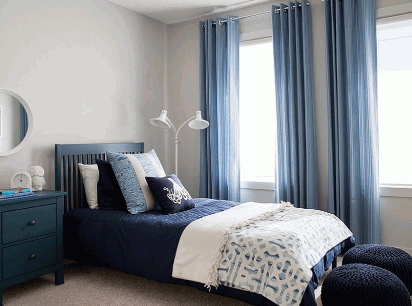
Keeping a blue and grey bedroom looking fresh and inviting requires some maintenance and care. In this section, we will discuss three key ways to maintain a blue and grey bedroom. First, we will cover the importance of regular cleaning and dusting to keep the space looking clean and crisp. Next, we will explore the benefits of avoiding clutter and keeping things organized to maintain a calming and cohesive atmosphere. Lastly, we will discuss the importance of refreshing and updating décor regularly to add a pop of color and prevent the room from becoming stale.
In order to maintain a clean and fresh blue and grey bedroom, regular cleaning and dusting are crucial. Follow these steps to keep your space looking its best:
To maintain a clean and organized blue and grey bedroom, follow these steps:
To maintain a fresh and inviting look in your blue and grey bedroom, it is important to regularly refresh and update the decor. Follow these steps to achieve this:
Remember, regularly refreshing and updating your decor will ensure that your blue and grey bedroom remains stylish and inviting for years to come.
Table Of Contents [hide]
Epoxy flooring, known for its strength and reliability, might seem like an ideal option for outdoor spaces. But can it withstand the harsh conditions? Let's look into this!
UV rays can cause color fading and yellowing of epoxy coatings. Plus, extreme weather like rain, snow, and heat can further weaken it.
Moisture resistance is another factor. Epoxy coatings offer good water resistance, but may not perform well in wet conditions.
The texture of outdoor surfaces also differs from indoors. Slip resistance is crucial for safety. Professionals can help customize the epoxy coatings with additives for increased traction.
Creating a durable outdoor space? Get expert advice today!

To understand epoxy flooring, delve into its specifics and benefits. Explore what epoxy flooring is and discover the advantages it offers. From its composition to its durability, epoxy flooring provides a seamless, easy-to-maintain surface that resists stains and enhances the overall appearance of your outdoor space.
Epoxy flooring is a great choice for both residential and commercial spaces. It's made of a strong and versatile material that's applied as a coating to concrete floors. This layer creates a glossy, seamless surface that's resistant to stains, chemicals, and wear.
Epoxy flooring can really make a space look great. It comes in a wide array of colors and finishes, so you can create the look you want. From solid colors to metallic effects, epoxy flooring can make any dull floor into a stunning focal point.
It's also really practical! It's incredibly tough - it can handle heavy foot traffic and impacts without showing signs of wear. It's perfect for places with lots of people, like garages, warehouses, and stores.
Plus, epoxy flooring is easy to clean and maintain. Unlike regular concrete floors, it won't absorb stains. So, it's simple to keep clean with regular maintenance. Plus, it saves time and keeps the environment hygienic.
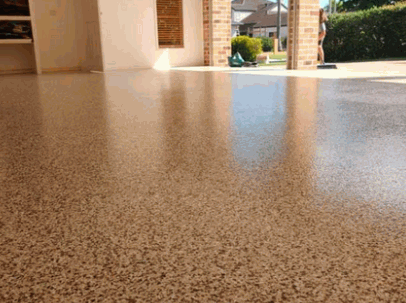
Epoxy flooring is a popular choice for both residential and commercial spaces due to its many advantages. It is known for its strength and resilience, making it suitable for areas with high usage. Plus, its smooth, seamless surface makes it easy to clean. It is also resistant to chemical spills and has anti-slip properties which improve safety. Moreover, epoxy floors have a wide range of customization options for a unique look.
A study by the American Concrete Institute (ACI) showed that when installed properly, epoxy floor systems have a lifespan of up to 20 years or more. This indicates that epoxy flooring can be a cost-effective investment.
Epoxy flooring has several benefits that improve the functionality, aesthetics, and longevity of floors in homes and businesses. It is durable, easy to maintain, and offers chemical resistance and customization options.
To ensure the successful use of epoxy flooring outdoors, consider various factors such as climate, exposure to sunlight, and moisture levels. Additionally, proper preparation and installation play a crucial role. Let's explore the factors to consider when using epoxy flooring outdoors and the preparation and installation process for outdoor applications.
Epoxy flooring is tough and can withstand elements like UV rays, moisture, chemicals, and temperature shifts. Crucial for success, you must prep the surface: clean, repair any cracks or damage, and have a smooth surface.
Outdoor epoxy also needs UV-resistant properties to avoid fading or discoloring. Maintenance helps extend its life—maybe regular cleaning or reapplication of topcoats/sealants.
Weather and climate affect outdoor epoxy flooring—extreme temp, heavy rain, or too much sun can harm its durability. Plus, some epoxy formulas are made for outdoor use, containing additives like elastomers or flexibilizers for better resistance and flexibility.
For best results, talk to an expert before installing outdoor epoxy flooring. They can help choose the right product and offer advice on installation.
Weather resistance
Epoxy flooring is perfect for outdoors - it's weather-resistant! Here are some of its key advantages:
Plus, it's slip-resistant, easy to clean, and very durable!
Epoxy flooring is an excellent choice for outdoor use. MoMA in New York City uses epoxy terrazzo flooring in its outdoor sculpture garden. It's easily able to handle constant foot traffic and exposure to the elements. Proving that epoxy flooring is long-lasting and reliable outdoors!
UV resistance
Epoxy flooring is known for its durability and versatility. But, can it hold up against the destructive effects of UV rays? Let's find out if epoxy flooring can be used outdoors by looking at UV resistance.
UV rays can cause epoxy to degrade, resulting in discoloration, fading, and a shorter lifespan. However, epoxy technology has advanced, creating UV-resistant formulations. These provide better protection against these effects.
Let's look at the key characteristics related to UV resistance:
| Characteristic | Description |
|---|---|
| Color Retention | How well epoxy maintains its original color. |
| Gloss Retention | If epoxy flooring can keep its glossy appearance in sunlight. |
| Shrinkage Resistance | If epoxy stays structurally sound under temperature changes due to sunlight. |
These factors are necessary when deciding if epoxy is suitable for outdoor use. It ensures the flooring keeps its aesthetic appeal while withstanding environmental challenges.
In addition, regular maintenance and a UV-resistant topcoat can make epoxy last longer outside. This layer works as a shield against damaging UV rays.
Tip: When using epoxy outdoors, get high-quality UV-resistant products. Also, invest in maintenance for long-term durability.
By understanding the importance of UV resistance in epoxy flooring, you can make informed decisions about using this material outdoors. High-quality products and maintenance will help your outdoor space stay functional and beautiful for years.
Uncover more: Is Resin Flooring Suitable For Bathrooms

For outdoor epoxy flooring, start with surface preparation. Clean and get rid of dirt, debris, and any coatings. Use a pressure washer or cleaner for a smooth surface. Then, inspect for cracks, holes, or imperfections. Fill them with epoxy filler or patching compound. Then, apply an epoxy primer for adhesion. Follow the manufacturer's instructions. Allow drying time before coating.
Mix epoxy resin and hardener according to instructions. Pour some onto the surface and spread with a roller or brush. Work in sections. Add decorative elements, if desired. Sprinkle them over wet epoxy while still tacky. Once the base coat has cured, apply a protective topcoat.
Maintenance is necessary to preserve durability and aesthetics. Clean properly and avoid harsh chemicals. Look out for signs of damage or wear.
Surface Preparation
Surface Prep is a must for outdoor epoxy flooring. Without it, the epoxy won't stick and the finish won't last. Here's a 6-step guide to help you:
Remember, temp and humidity can affect adhesion. Follow manufacturer guidelines for optimal results. With these steps, your epoxy flooring will be strong and last longer.
Application techniques for outdoor epoxy flooring
Want to apply epoxy flooring outside? Here's a step-by-step guide!
Unique Details:
The Constructor Expert Tip: Outdoor epoxy flooring is resistant to harsh weather, making it suitable for patios, driveways, and pool decks.
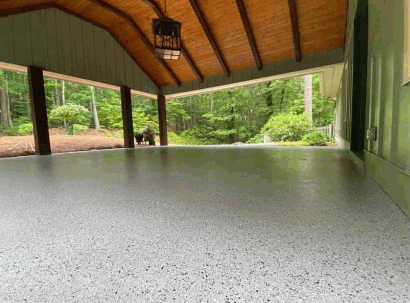
To ensure you make an informed decision about using epoxy flooring outdoors, explore the pros and cons of this choice. Discover the benefits of using epoxy flooring outdoors, as well as the potential drawbacks.
Epoxy flooring is an excellent choice for outdoor spaces, due to its several advantages, such as durability, low maintenance, enhanced safety, and aesthetic appeal. Plus, it resists fading and discoloration from sunlight, which keeps your outdoor area looking vibrant.
To get the best results when using epoxy outdoors, it's important to prepare the surface before application. Also, allow sufficient curing time for the epoxy to bond with the substrate. To keep it looking its best, regular cleaning and maintenance are recommended. And lastly, it is best to hire a professional installer for a seamless application.
By following these tips, you can maximize the benefits of epoxy flooring outdoors!
Using epoxy flooring outdoors has drawbacks. Points to consider:
Finding an experienced professional for outdoor epoxy installation is a must. Otherwise, the application won't be good and durability will suffer.
Using epoxy outdoors has risks. Consider the cons before deciding.
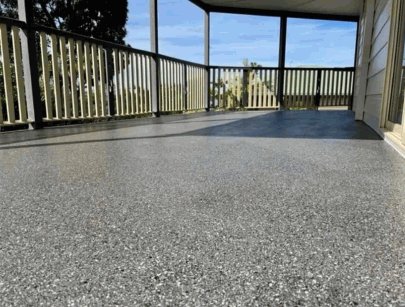
To ensure the longevity and durability of your outdoor epoxy flooring, proper maintenance and care are vital. Keep your flooring looking its best by following these sub-sections: cleaning and regular maintenance, as well as repairs and touch-ups. By adhering to these solutions, you can safeguard the quality and appearance of your outdoor epoxy flooring.
To keep your outdoor epoxy flooring in good shape, follow these six steps:
Also, direct sunlight can discolor the floor over time. To prevent this, install shades or awnings to shield it from UV.
With consistent cleaning and maintenance, you can save money and keep your outdoor epoxy floor looking great for years.

Inspect the surface often! Check for cracks, chips, and other problems. Clean the area carefully before fixing it. Use epoxy patching compound with a putty knife. Sand and polish if it looks rough. If extensive damage, get professional help!
Also, maintenance is key. Look after your epoxy flooring to avoid costly repairs. Don't let it deteriorate, act now to keep it in great shape.
Epoxy flooring is becoming a popular choice for many outdoors. Its strength and weather resistance make it great for outdoor areas, like patios, driveways, and garages.
Epoxy can resist extreme temperatures, UV rays, rain, and snow. Plus, it can be mixed with anti-slip additives to prevent slips and falls.
Another plus - epoxy flooring is low-maintenance. It's easy to clean and doesn't need regular sealing or waxing.
In the 1960s, NASA searched for a solution to protect aircraft hangar floors. They found epoxy coatings could handle the tough conditions. Since then, epoxy has been used more and more outdoors.
Table Of Contents [hide]
Epoxy flooring is popular for its durability and good looks.
To keep it looking great, regular cleaning and maintenance is key. Here, we'll cover the steps for cleaning epoxy flooring and some tips to get rid of dirt, stains, and other debris.

Cleaning epoxy flooring is essential for keeping it long-lasting and aesthetically pleasing. Ignoring regular cleaning can cause dirt, dust, and stains to accumulate, which can ruin the flooring over time.
As well as these advantages, there are other important facets to consider when cleaning epoxy flooring. For example, using non-abrasive cleaners that are specifically designed for epoxy floors helps preserve their life. Refraining from harsh chemicals or scrubbing tools that may harm the surface is essential for maintaining its quality.
Ready to clean epoxy flooring? Follow these 3 simple steps for a successful clean:
Now you're ready for the actual cleaning! Plus, here are some extra tips:
Follow these suggestions for a pristine epoxy floor that looks great and lasts long!
Sweeping and vacuuming are an absolute must for keeping your epoxy floor clean! Here are some tips from expert cleaners to remember:
Don't forget to clean the beneath furniture and move it around occasionally. This will stop dust from accumulating and ensure a thorough cleaning.
Proper sweeping and vacuuming techniques are important for keeping your epoxy floor looking its best! Did you know? According to CleanLink, sweeping helps avoid scratches on epoxy floors, increasing their lifespan.

Removing stains and spills from epoxy flooring can be tricky. However, the right techniques and products can help you clean your epoxy floor and make it shine again. Here's a 3-step guide to remove the stains and spills.
| Step | Details |
|---|---|
| 1 | Identify the stain: First, figure out the type of stain or spill you're dealing with. Different stains require different cleaning methods. Oil-based stains need degreaser while food stains need a mild detergent. |
| 2 | Prepare the cleaning solution: Once you've identified the stain, prepare the cleaning solution. Follow the instructions on the package for the cleaner. Use only recommended cleaning products that are safe for epoxy surfaces. |
| 3 | Clean the stained area: Now that the solution is ready, use a soft-bristle brush or mop to apply the solution. Scrub lightly in a circular motion to remove the stain. Rinse with clean water afterward. |
If some stains are stubborn, you might need multiple attempts or specialized stain removers. In this case, seek professional help or ask an expert for advice.
To prevent stains and spills in the future, here are some tips:
By following these tips, you can keep your epoxy floor clean and shiny while preventing staining or spilling. Remember, prevention is the key when it comes to maintaining an impeccable epoxy floor.

Epoxy flooring is durable and resistant to chemicals and stains. To clean it properly, here are the 5 steps to follow:
To protect the epoxy surface, don't use abrasive cleaners or tools. Use soft-bristle brushes or microfiber mops instead.

A thin layer of wax specifically designed for epoxy floors can enhance the shine and provide added protection.
Drying times may vary based on humidity and airflow. So, be patient and give it time to dry before finishing the cleaning.
The concept of epoxy flooring started in World War II on military aircraft hangar floors. As technology progressed, cleaning methods for epoxy flooring evolved to maintain its look and durability.
To ensure the long-term beauty and functionality of epoxy flooring, proper maintenance is essential. Here are some tips to keep your epoxy floors looking their best:
Moreover, don't use abrasive cleaners or scrub brushes as they may cause scratches. Also, extreme temperatures can affect the durability of epoxy floors, so avoid exposing them to excessive heat or cold.
Delve into: Can Epoxy Flooring Be Used Outdoors

It's time to wrap up our discussion on how to clean epoxy flooring. Remember: regular maintenance is key to preserving its beauty and longevity. The right cleaning solution and method are important.
Use a pH-neutral cleaner specifically designed for epoxy floors. This will be gentle yet effective in removing dirt, stains, and grime. Use a soft-bristle broom or a dust mop to sweep or dry-mop the floor regularly. For deeper cleaning, use a microfiber mop or a soft nylon brush. Don't use harsh chemicals or abrasive tools. Also, don't expose your floor to excessive heat or direct sunlight.
Table Of Contents [hide]
To ensure a suitable flooring solution for bathrooms, it is essential to understand resin flooring and the importance of having the right flooring in this area. In this section, we will dive into the explanation of resin flooring and highlight the significance of having an appropriate flooring option for bathrooms.

Resin flooring is a great choice for residential and commercial spaces. It's made with two or more components, normally epoxy resin and a hardener. Benefits include low maintenance, stain resistance, and excellent durability.
It also looks great. There are lots of colors, patterns, and finishes to choose from. Get a sleek and modern look or a rustic one - the possibilities are endless.
Plus, it's easy to install. You don't need multiple pieces like other floorings. Resin flooring is seamless, creating a smooth surface that looks good and is simple to clean.
Resin flooring is also highly chemical resistant. It won't get damaged or discolored by different chemicals. So, it's great for labs, industrial facilities, and garages where spills happen.
Remember: Prep the surface before installing the resin! Removing any existing coatings or contaminants will guarantee maximum adhesion and longevity.
Check out: How To Clean Epoxy Flooring
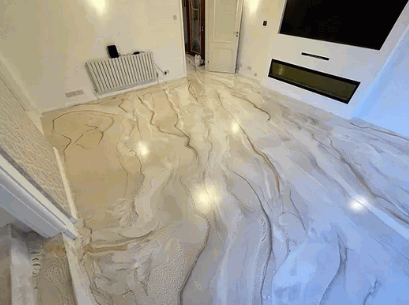
When selecting the perfect flooring for your bathroom, there are lots of advantages to consider! Firstly, it increases safety by providing a non-slip surface - reducing the risk of slips and falls. Secondly, it stops water damage happening to the floor due to its waterproof properties. Lastly, it adds beauty and value to the bathroom, making it look more attractive.
Moreover, suitable flooring can help fight against mold and mildew. High humidity in a bathroom is a great breeding ground for mold and mildew, which are both unpleasant to look at and hazardous to one's health. By choosing materials such as ceramic tiles or vinyl planks, you can keep mold and mildew growth to a minimum.
So, don't miss out on these benefits! Invest in a high-quality, stylish option that is both functional and aesthetically pleasing. Enjoy a safer and more beautiful bathroom experience today!
To ensure the durability and longevity of your bathroom flooring, consider resin flooring. Its benefits include being waterproof and resistant to moisture, as well as being seamless and easy to clean. This section will explore the pros of resin flooring for bathrooms, focusing on these three sub-sections: durability and longevity, waterproof and moisture resistance, and seamless and easy cleaning.

Resin flooring is an ideal choice for bathrooms, due to its impressive durability and longevity. It stands up to heavy foot traffic, and won't get scratched, stained, or damaged by moisture. Let's look at its key features in a table.
| Feature | Benefit |
|---|---|
| Scratch-resistant | Can take daily wear and tear without showing any marks |
| Stain-proof | Stains won't penetrate the surface |
| Moisture-proof | Protects against water damage |
| Easy to Clean | Requires minimal maintenance |
The advantages of resin flooring make it great value for money. It's also anti-slip, so it's safe for wet bathroom environments. Plus, it's available in different colors and finishes, so you can pick the perfect style.
Pro Tip: To extend the lifespan of your resin flooring, consider adding a protective coating. This will keep the floor looking good, and provide extra protection against daily wear and tear.
In conclusion, resin flooring offers excellent durability and longevity, making it a great choice for bathrooms. It's easy to maintain, and you can customize the style. So, when it comes to flooring for your bathroom, resin flooring is an exceptional option.
Resin flooring is the ultimate water-free solution for your bathroom! It's got seamless installation to prevent water leakage, a slip-resistant surface for safety, and is mold and mildew-resistant. Plus, no grout lines to accumulate dirt and bacteria!
Slip-resistant surfaces improve safety even with soap or water on the floor - great for households with young children or elderly members. And, it eliminates potential mold and mildew breeding grounds.
Invest in resin flooring for a stylish, safe, and clean bathroom that stays waterproof and moisture-resistant. Enjoy all these benefits and more!
Resin flooring in bathrooms is an excellent choice for cleanliness, durability, and design. Its seamless surface eliminates grout lines and is easy to clean. Plus, the non-porous nature of resin prevents water absorption, reducing the risk of mold or mildew growth. It's also durable and can withstand daily wear and tear without losing its shine.
Benefits include:
Plus, it's eco-friendly and perfect for allergy sufferers, as it eliminates hiding places for dirt and allergens. For years, hospitals and labs have used resin due to its hygienic properties. Now, more homeowners are recognizing the advantages it provides in the bathroom.
To avoid potential drawbacks when considering resin flooring in bathrooms, consider the cons of this material. Slippery when wet, limited design options and the potential for yellowing over time need to be taken into account. Be aware of these factors to make an informed decision about using resin flooring in your bathroom.
Resin flooring can be hazardous when wet. Its slick surface increases the probability of slips and falls, possibly causing injuries. To prevent this, one should utilize anti-slip additives or textured finishes to enhance grip.
Furthermore, resin floors are more slippery when subjected to water or soap. To reduce this danger, use anti-slip additives or textured finishes to the flooring. This will augment traction and limit the chances of accidents.
Also, resin floors need extra maintenance due to their sensitivity to water damage. It is imperative to clean and dry the floors regularly to dodge moisture accumulation, which could result in issues like mold growth or discoloration.
Pro Tip: When choosing resin flooring for bathrooms, prioritize safety by adding anti-slip features such as additives or textures. This will guarantee a secure environment for all users while still maintaining the floor's aesthetic beauty.

Resin flooring is a great pick for bathrooms, but it has some flaws too - like limited design options. Let's take a look at what you can get with resin flooring for bathrooms:
Design Options:
This table shows that resin flooring doesn't offer much in terms of design and color. If you're after intricate patterns or a realistic stone look, this may not be the best choice.
However, resin flooring is still favored for its durability and low maintenance. It's water-resistant, so it's perfect for wet areas like bathrooms.
If you're thinking of using resin flooring for your bathroom, bear in mind that there may not be much design variety, but it makes up for it with its strength and simplicity of maintenance. Don't let limited options stop you from considering this practical solution for your bathroom renovations!

Over time, yellowing may occur on resin flooring in bathrooms. This can be a bummer for those who want a bright, pristine space. As the resin ages, its color may change, making it less visually appealing.
UV rays from the sun and harsh chemical cleaners can cause discoloration. Different types of resin have different levels of resistance to yellowing. Premium quality resins may have additives to stop discoloration, but they cost more.
To explore alternatives to resin flooring for bathrooms, consider tile, vinyl, and concrete flooring as solutions. Each sub-section offers unique characteristics and benefits to suit your bathroom needs. Tile flooring provides durability and a wide range of design options. Vinyl flooring offers water resistance and easy maintenance. Concrete flooring offers a sleek, modern aesthetic and long-lasting performance.
Tile flooring is a great choice, thanks to its versatility. It comes in many shapes, sizes, colors, and patterns. Plus, it's water-resistant and durable! It's even hygienic, as it can be sanitized easily. And, it adds value to your home.
This type of flooring also has some unique features. It's cool to the touch on hot days and can be used with underfloor heating for cold months.
When picking tile flooring for your bathroom, consider slip resistance, cleaning ease, and style. Ceramic tiles are usually the go-to option, but natural stones like marble or travertine can bring luxury. Just remember to seal them properly.
If you want to add visual interest, use mosaic tiles on accent walls or backsplashes. They can also be used in shower niches or on the floor to make a statement.
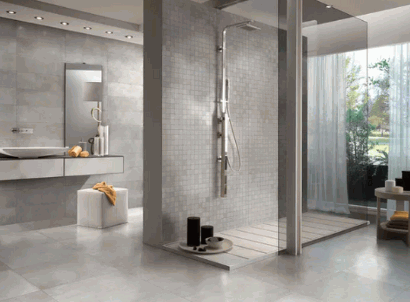
Vinyl flooring is unique. It offers insulation against noise and temperature shifts, creating a comfy bathroom atmosphere all year round. It's also slip-resistant and stands up to bathroom stains and chemicals.
If you're looking for alternatives, check out these 3: Laminate Flooring, Rubber Flooring, and Cork Flooring. Each offers its own benefits: scratch resistance, UV protection, cushioning, water resistance, eco-friendly, and antimicrobial properties. With these options, you can find something to suit your preferences and give you practicality and style for your bathroom.

Concrete floors are incredibly strong! They can handle heavy foot traffic and high moisture levels. Cleaning and maintenance are a breeze, so they're perfect for busy bathrooms.
Plus, they can be customized with various finishes, colors, and patterns to fit any style. With proper care, they can last decades without needing to be replaced.
Also, they're budget-friendly compared to other flooring options. And, they don't harbor bacteria or allergens, creating a healthier environment.
Concrete floors have thermal mass properties, too. This helps regulate temperature, especially in colder months. The feet will stay warm on the floor!

To conclude, recap the pros and cons of resin flooring for bathrooms, and consider the key factors when choosing the most suitable flooring option for your bathroom. This will help you make an informed decision and ensure that your bathroom flooring meets your needs and preferences.
Table Of Contents [hide]
Keeping your dining room carpet clean? A few key points to consider! How To Keep Carpet Clean In Dining Room is here to guide you.
High-traffic area? Prone to spills? Food and drinks? Regular cleaning is a must.
Preventative measures help. Place a rug or mat. Chair pads or coasters? No scratches or indentations.
Vacuuming is essential. Dirt, dust, crumbs? All gone. Vacuum once a week - especially around the dining table.
Periodic deep cleans for optimal maintenance. Steam clean or use a carpet cleaner. Deep-seated dirt and stains? No problem.
Follow these tips. Be proactive. Prevention key. Enjoy delicious meals with family and friends - and keep your carpet clean in the dining room!

It's crucial to keep the dining room carpet clean. Dirty carpets are not only ugly but also contain germs and allergens that can harm your family's health. Thus, regular cleaning and maintenance are a must for a safe and healthy atmosphere.
A clean carpet in the dining room creates an inviting atmosphere for meals and gatherings. It adds to the overall beauty of the place. Also, it stops dust from spreading in the air, helping maintain indoor air quality.
Vacuuming regularly is essential for proper carpet maintenance. It takes out dirt, dust, and debris. It's better to use a vacuum cleaner with powerful suction. Deep cleaning should be done occasionally to get rid of stains and odors.
For extra carpet care, put doormats at entrances to stop dirt from coming in. Don't let spills stay; clean them quickly to stop stains from setting into the fibers.
Learn More: How To Keep Bedroom Carpet Clean
To keep your dining room carpet clean, preparation is essential. Here are five steps to make your dining room ready for a deep clean:
In addition, you can maintain a clean dining room carpet by regularly vacuuming, using mats and rugs at entrances, addressing spills quickly, and using the right cleaner. With these tips, your dining room carpet will look great and be hygienic for your family.
Vacuuming your dining room carpet can be simple with this 6-step guide!
Plus, here are some other tips for keeping the carpet clean:
Vacuuming and preventative measures help keep the dining room carpet looking good. Do it often and enjoy a beautiful, inviting area!

Speed is key! Deal with stains quickly. The longer you wait, the harder to remove. Blot, don't rub, for fresh spills. Different stains need different solutions. Test before applying anything on the carpet. Avoid excess moisture when cleaning. Minimize liquid and dry thoroughly post-cleaning. Keep carpets spotless to impress guests. A clean dining room begins from the ground up!
Vacuuming is key when deep-cleaning! It removes surface dirt and stops it from getting into the fibers. Steam-clean with a profesh machine or hire a professional service - that'll remove deep-rooted stains, bacteria, and allergens. Target stubborn stains with spot-cleaning and stain removers.
Extra tips: Sprinkle baking soda on the carpet before vacuuming to get rid of smells. Try pro dry cleaning services for periodic deep cleanings.
Pro Tip: Don't forget to read and follow the manufacturer's instructions when using cleaning products on the carpet.
Accidents happen but act fast to prevent stains. Blot spills with a clean cloth or towel. Vacuum regularly - focus on traffic areas, and use attachments for edges. Use spot cleaners sparingly - test inconspicuous areas first. Allow proper drying time after cleaning.
In the past, people used sun and clotheslines to dry carpets. Now, carpet dryers speed up the process for optimal results.
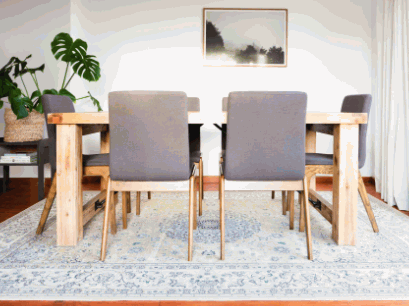
Keeping your carpet clean in the dining room is essential. Vacuuming regularly is key to removing dust, dirt, and food particles. Spills should be addressed immediately by blotting them with a cloth or paper towel. Avoid rubbing as it may spread the stain. Using carpet protectors under furniture helps to prevent damage. Professional deep cleaning every 12-18 months is recommended. Consider the type of carpet, as different materials require different care techniques. Place a doormat at the entrance to reduce the dirt and debris. Applying a stain-resistant treatment is a good option. Regular maintenance and preventive measures are key. According to HomeAdvisor.com, professional deep cleaning can extend the life of carpets by removing dirt and allergens. Enjoy a fresh and spotless carpet for years to come!
Table Of Contents [hide]
A spic & span bathroom carpet is a must for a hygienic environment. It boosts the look of the bathroom and promotes good health. Ignoring its cleanliness can lead to the build-up of dirt, germs, and bad smells.
Vacuuming regularly is key to keeping a bathroom carpet clean. This removes dust, dirt, and debris which can accumulate over time. Also, using a carpet cleaner specifically designed for bathrooms is suggested. This helps to eliminate bacteria and stains effectively.
Apart from regular cleaning, there are some other points to remember. Place mats or towels near the shower/bath area to stop excess moisture from getting to the carpet. Also, quickly deal with any spills or accidents to avoid stains from setting in.
It's obvious that having a clean bathroom carpet is important for hygiene and looks. By following proper cleaning methods and being proactive to stop stains and moisture build-up, one can get a fresh and welcoming bathroom environment.
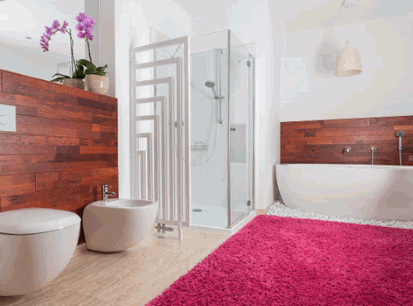
To prepare for cleaning your bathroom carpet effectively, gather the necessary materials and tools as a solution. Additionally, clear the bathroom floor for easy access.


To efficiently vacuum the carpet in your bathroom, tackle the task of removing loose dirt and debris first. Then, make use of the various attachments available to reach those tricky areas. This thorough approach to vacuuming will ensure a clean and fresh bathroom carpet.

Prep your vacuum cleaner! Ensure it's in good working order and the bag or canister is empty. Clear larger objects or obstacles off carpets, so your vacuum cleaner won't get damaged. Vacuum using long, overlapping strokes in a pattern across the carpet. Pay extra attention to high-traffic areas and places where dirt accumulates, like near entryways and under furniture.
Invest in a vacuum cleaner with a HEPA filter for better air quality. This filter traps smaller particles that regular vacuums miss, improving air in the home.
Understand why each suggestion works. Clearing objects prevents clogs and damage to the machine. Long, overlapping strokes clean carpet fibers and cover the whole area. Focusing on high-traffic areas removes dirt and extends the life of your carpet.
Follow these steps for a healthier living environment and for removing loose dirt from your carpet.
The crevice tool is perfect for reaching between couch cushions or along baseboards. The brush attachment is great for upholstery and curtains. Its soft bristles remove dust and pet hair.
The extension wand is ideal for high places like ceiling fans or bookshelves. It avoids straining.
The pet hair attachment collects stubborn pet hair from carpets and furniture. The floor brush attachment is perfect for hardwood or tile floors. Its soft bristles won't damage the flooring.
Remember to clean the attachments regularly for efficiency. Refer to the manufacturer's instructions for proper usage and care.
Discover: How To Keep Carpet Clean In Dining Room
To effectively treat stains and spots on your bathroom carpet, turn to this section on "Treating Stains and Spots." Learn how to identify specific stains and the appropriate cleaning methods to tackle them. Additionally, explore the options of using homemade or store-bought carpet stain removers for effective stain removal.
Let's investigate this table. It outlines what to do for certain spots.
| Stain | Cleaning Method |
|---|---|
| Red Wine | Salt, club soda |
| Coffee | Dish soap, white vinegar |
| Ink | Rubbing alcohol |
| Grass | Liquid detergent, cold water |
| Grease | Dish soap, warm water |
| Blood | Hydrogen peroxide |
Now let's examine some extra details.
For red wine stains, it's vital to be fast. Blot with a cloth or paper towel. Sprinkle salt to take in wetness then treat with club soda.
With ink spots, rubbing alcohol works great to break down colors. Use a cotton ball or cloth and carefully pat the area.
Here are a few tips to remember:
If you remember these tips and know how to manage stains, you can keep your stuff looking great.
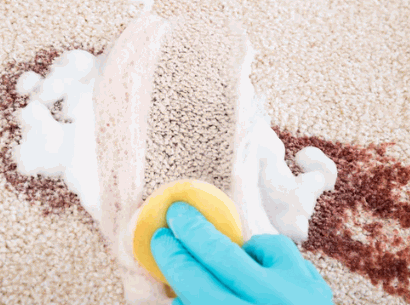
Always read the instructions on the label before using carpet stain remover! Blot the stain gently with a clean cloth and don't rub it. Fresh stains should be tackled quickly. Test homemade solutions on an inconspicuous area first. Different types of stains need different approaches. Some products have specific instructions for certain materials.
So, remember to follow instructions, act quickly, and select the right product for the stain. Using carpet stain removers can be a game-changer for your carpets!
To deep clean your bathroom carpet effectively, utilize carpet shampoo or cleaning solution and employ the technique of scrubbing the carpet with a brush or sponge. These two sub-sections provide simple yet effective solutions for achieving a thoroughly cleaned bathroom carpet.
Carpet shampoo or cleaning solution can be a key tool for deep cleaning carpets. It can get rid of dirt and spots, leaving carpets fresh and vibrant. Here’s how to use it:
It's best to work in sections and not oversaturate. Different carpets need special shampoos or solutions, so check with the maker or hire a professional.
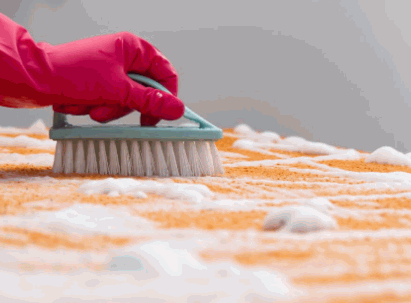
To effectively rinse and dry your bathroom carpet, the key is to remove any residue and expedite the drying process. Thoroughly rinsing the carpet ensures the removal of any leftover cleaning product or dirt. Assisting the drying process with fans or open windows helps to speed up the evaporation and prevent mold or mildew growth.
Thoroughly rinsing your carpet is key to a successful cleaning. Residue can come from cleaning solutions, spills, or just general dirt and grime over time. Rinsing helps to get rid of all traces of residue and leaves your carpet clean and fresh. Here's how:
For an even deeper clean, here are some extra tips:
These suggestions can help you get your carpets sparkling clean and make them last longer. So go ahead and give your carpets the attention they deserve for a fresh and inviting space.
Fans and open windows can help you dry your carpet faster. Here's what to keep in mind:
Time is of the essence! Start drying your carpet ASAP post-cleaning or rinsing. This can prevent mold and ensure speedy results.
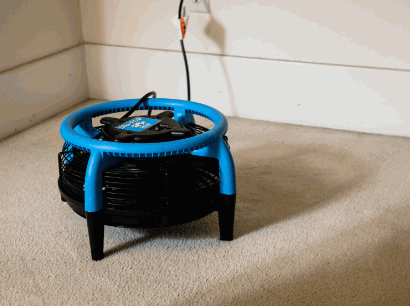
To maintain a clean bathroom carpet and keep it looking fresh, incorporate these tips. Regular vacuuming and spot cleaning will help remove dirt and prevent stains. Using doormats or rugs outside the bathroom will also minimize the amount of dirt that enters the space.
Vacuum your carpet once a week to get rid of dirt, dust, and debris. Use a handheld vacuum or a brush attachment for hard-to-reach places. When you spot a spill or stain, soak up the liquid with a clean cloth or paper towel and use an appropriate cleaning solution. Avoid using harsh chemicals or bleach as these can damage the fibers. For mold or mildew, mix vinegar and water and scrub the area gently. Put a rubber-backed bath mat on top of the carpet to prevent moisture and stains.
Also, remember to regularly wash the bath mat, shower curtain, and other items that come into contact with the carpet. Get professional steam cleaning every now and then to deep clean the bathroom carpet and restore its fibers. To make your bathroom smell fresh, sprinkle baking soda on the carpet before vacuuming.
Invest in a doormat for the bathroom entrance. Its coarse texture will trap dirt and debris. Place a rug outside the door too - it's stylish and has the added benefit of blocking dirt and moisture. Put a small mat or rug near the sink, to absorb water spills or drips.
Not only practical, these mats and rugs can also make your bathroom look great. Pick designs and colors that match your bathroom theme. Clean these floor coverings regularly, to keep your bathroom clean and hygienic.

Indulge in the satisfaction of having a clean bathroom carpet! It's essential to keep your space hygienic and pleasant. Clean your carpet regularly to banish dirt, stains, and odors.
In addition to regular cleaning, periodically deep clean your carpet. Use steam or shampooing for deep-seated dirt and grime. Leave the carpet looking and feeling revitalized.
To keep your bathroom carpet clean, use a waterproof mat underneath. This prevents moisture from seeping in and reduces the chance of mold or mildew growth.
Follow these easy steps and enjoy a fresh and clean carpet for years! Don't miss out on hygienic living space - act now and give your bathroom carpet the care it deserves!
Table Of Contents [hide]
It's essential to keep your bedroom carpet clean for a healthy and comfortable environment. A clean carpet not only looks great but also helps prevent allergies and respiratory issues. Here are some tips to keep your bedroom carpet clean and fresh:
Carpets have been around since ancient times. Persian and Egyptian civilizations treasured them as luxury items. Over time, weaving techniques evolved, with intricate patterns reflecting culture and craftsmanship. Carpets are still a popular way to add warmth, comfort, and style to any space.
Cleaning your bedroom carpet doesn't have to be hard. Follow these tips and tricks for a spotless, fresh carpet for years! A clean bedroom starts with a clean carpet!
Dig Deeper: How To Clean A Bathroom Carpet

Keep your bedroom carpet clean - it's essential for a healthy home. Clean carpets look better and keep allergies away. Dust mites, which love dirty carpets, can cause sneezing, itching and asthma. Vacuuming and deep cleaning get rid of them. Clean carpets also improve air quality. Plus, they last longer!
To keep your bedroom carpet clean, follow these steps:
Dedicate time and effort to keep your bedroom carpet clean. You'll have a healthier living space and protect your flooring. Enjoy a cleaner, more comfortable home! A clean carpet is the key.
To prepare your bedroom for carpet cleaning, tackle the task with efficiency and effectiveness. Clearing and decluttering the room and vacuuming the carpet are two crucial steps that will provide a solution to the cleanliness of your bedroom carpet.
Note: Moving heavy furniture may require help or special tools to stay safe.
Also, The Spruce states that clearing and decluttering can improve air quality and lengthen the life of carpets.
Remember, preparing the bedroom properly will make carpet cleaning faster and healthier.
Start with clearing the room of any furniture or toys. This will make it easier to move the vacuum and ensure all areas of the carpet are cleaned.
Check the vacuum cleaner's bag or canister to make sure it's not full. A full bag can reduce suction and make it harder to clean.
Vacuum along the edges of the room using a crevice tool or attachment. This will help remove dust and debris from hard-to-reach areas.
Move on to the main section of the carpet. Start at one end and work towards the other side, in slow, overlapping strokes.
Pay attention to high-traffic areas, as they tend to accumulate more dirt. You may need to go over these areas multiple times.
Don't forget to vacuum under furniture and rugs. These areas often have a lot of dirt and debris.
In addition to these steps, there are a few suggestions that can enhance vacuuming:
By following these suggestions and implementing a thorough vacuuming routine, you can make sure your bedroom carpet is ready for effective cleaning. A clean carpet can improve the bedroom's overall appearance and contribute to a healthier indoor environment.

To keep your bedroom carpet clean, choosing the right cleaning method is key. In order to effectively maintain your carpet's cleanliness, consider the dry cleaning method and the steam cleaning method. Each method offers its own solution for keeping your carpet in pristine condition.
The dry cleaning method is an amazing solution to stains. It's gentle on fibers, so no damage or distortion. Plus, there's no need to wait! Straight away you can use your carpets again! Plus, it eliminates odors. It's great for delicate fabrics too. To top it off, many dry cleaners use eco-friendly solvents.
Other methods might leave residue or shrink carpets. But, the dry cleaning method avoids these risks. Get a powerful and gentle clean. Say goodbye to stains and odors with this efficient and safe option that preserves your carpets. Enjoy fresh and clean carpets today!
Steps to dry clean a bedroom carpet
Dry cleaning a bedroom carpet? Here's how to go about it.
Pro tip: Test new cleaning products/solutions on small, hidden parts of the carpet for colorfastness and compatibility.
Follow these steps to effectively dry clean your bedroom carpet without expensive professional services.
Steam cleaning is a great way to clean carpets. It uses hot water and steam to remove dirt, allergens, and stains. This method has many advantages over traditional cleaning methods.
Reasons why steam cleaning is awesome:
For best results:
If you follow these tips, steam cleaning can be really effective. Don't forget that regular carpet maintenance is essential for long-lasting carpets.
Steps to steam clean a bedroom carpet
Experience a revitalized bedroom atmosphere! Follow these steps to steam clean your bedroom carpet for proper care and maintenance.
For tailored advice suited to your carpet, consult professional cleaners or check with the manufacturer. Regular steam cleaning extends the lifespan of the carpet and creates a healthier living environment. Take action today and enjoy a refreshed bedroom!
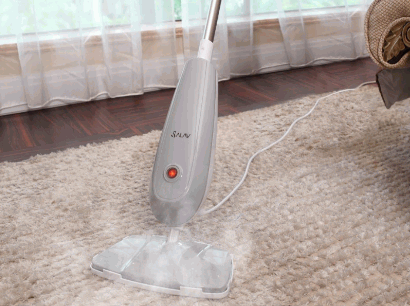
To effectively remove stains from your bedroom carpet, tackle the problem head-on by identifying the type of stain and utilizing appropriate stain removal methods. Understanding the nature of the stain and employing the right techniques will ensure a clean and spotless carpet.

To figure out the source, start by looking into where the stain came from. Food, fluids, or pet mess? Knowing its origin gives you clues about its makeup.
Check the color and texture. Is it light or dark? Liquid or solid? These details give you insight.
Sniff it. As gross as it sounds, smelling the stain can help you tell which type it is. Urine usually has a very distinct scent.
Look for other residue. Crumbs, fibers, sticky stuff? These can help ID the stain.
If you're still not sure, do some research online or ask a pro cleaner for advice.
It's crucial to recognize the stain to pick the right cleaning method and product. Water-based stains, like juice or coffee, are often simpler to get rid of than oil-based ones, like grease. So, choose your cleaning approach carefully to avoid damage to your bedroom carpet.
To get rid of stains, first, identify what type of stain it is. Whether it's food, beverage, or pet-related, understanding that will help you decide the best removal method. Don't rub the stained area. Instead, use a clean cloth or paper towel and gently blot the area. Rubbing could push the stain down and damage the carpet fibers. Choose a cleaning solution that is safe for your specific carpet material. Test it on a small area first to make sure it won't discolor or damage your carpet. Apply the cleaner with a cloth or sponge. Let it sit for a few minutes, then rinse it away with a cloth soaked in warm water. Repeat if needed until the stain fades or disappears. Act fast when spills happen to increase your chances of successful stain removal. Also, get deep cleaning for your carpets at least once every 12-18 months. That's the pro recommendation!

To keep your bedroom carpet clean and looking its best, implement regular maintenance and prevention tips. Start by vacuuming regularly to remove dirt and debris. Maximize cleanliness by using doormats and shoe racks to prevent outside dirt from entering. Additionally, consider applying carpet protectants for added longevity and protection against stains.
Vacuuming prevents dust and dirt from building up and harming your carpets. It also removes allergens, pet dander, and dust mites that can cause reactions or asthma issues. Regular vacuuming also helps control pests, such as fleas, by taking away their eggs and larvae. In addition, clean harder-to-reach places like corners and upholstery.
To get the best vacuuming performance, buy a reliable vacuum cleaner with attachments for various surfaces. Use a HEPA filter to trap fine particles. Don't forget to empty the vacuum bag or container regularly.
Pro Tip: Move furniture around periodically, to spread wear and tear on the carpet and keep it looking great.
Doormats and shoe racks are essential for keeping homes clean and free from dirt and debris. These simple items are the first line of defense against messes. A few tips to remember when using doormats and shoe racks:
Shoe racks are also a great way to keep your home tidy.
By using doormats and shoe racks, you'll keep dirt away and create a welcoming atmosphere. Regularly maintaining these items will help keep your home clean and organized.

Remember this when applying carpet protectant: allow time to dry, avoid furniture placement, and regularly vacuum. This simple act will extend the life of your carpets and keep them looking pristine for years!
Plus, carpet protectants provide UV protection to prevent fading.
To apply the protectant correctly:
Wrapping up, and having a neat bedroom carpet is essential. Follow the tips here and keep it free from dirt and bad smells.
Table Of Contents [hide]
One of the major decisions that people need to take is what to take with themselves and what to leave behind. If you're moving for a limited period of time - then it's easy - you just take what you'll need for the year and find a place to rent that is fully furnished.
Sell or donate them. Chances are you're not wearing more than half of them. Even if you take them with you, you're not magically going to start wearing them when you're in another country.
You're just going to pack more boxes and pay more to move them, and then leave them in the closet and not wear them. The same goes for shoes. Better declutter on site.
You don't need to spend a ton of money on bringing your nightstands or your wardrobe to another country.
Either find a property that is fully furnished or buy the furniture you need when you get there, it might be cheaper than moving them from one country to another.
Carefully examine the things you amassed from hobbies.
Is it books, skis, fishing equipment, arts and crafts, baking, etc. Get your most favourite things, the rest can go to your parents' or friends' house. Of if you're moving for a limited time, you can leave most of your things in storage.
We've seen people taking more than one or two big boxes with books... It's pointless. Just take 5 of your most favourite ones. Either way, chances are that if you've read a book once, you won't read it again.
Again, most of them make no sense to be moved cross-country.
Take your toaster, and kettle for example, but don't bring your waffle maker, your pancake maker, and other similar ones. Take a couple of pans, cups, and plates, if you need to take any at all.
Things you can leave behind (gift, sell or donate) - art, lamps, mirrors, and all kinds of decorative pieces (souvenirs, artificial flowers).
Don't take rugs, curtain, potted plants, all your kid's toys, take the ones they play with the most.